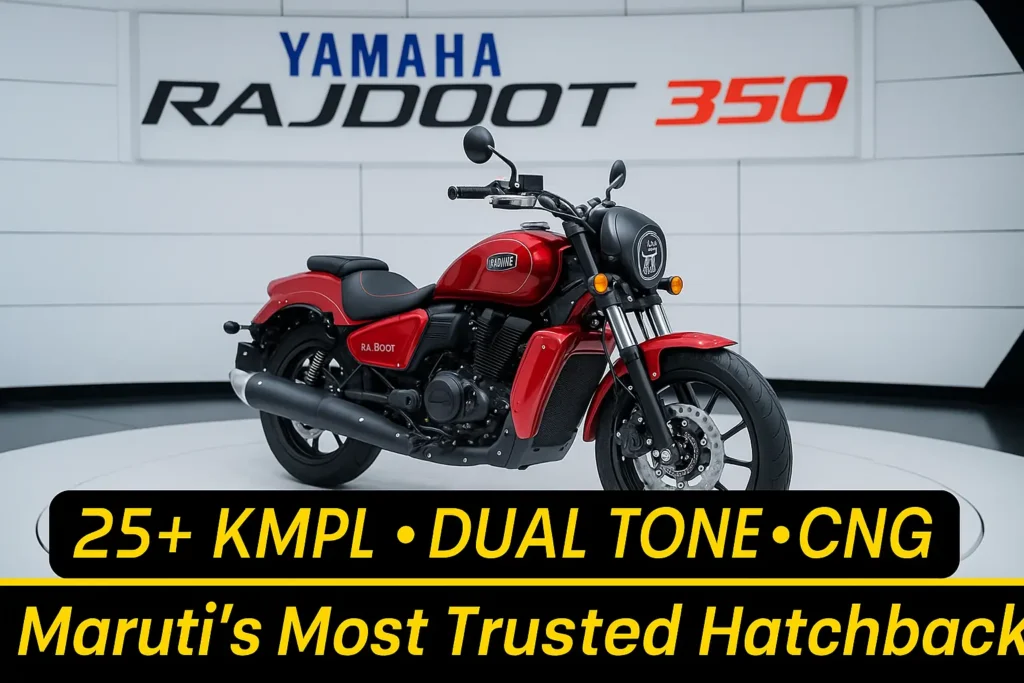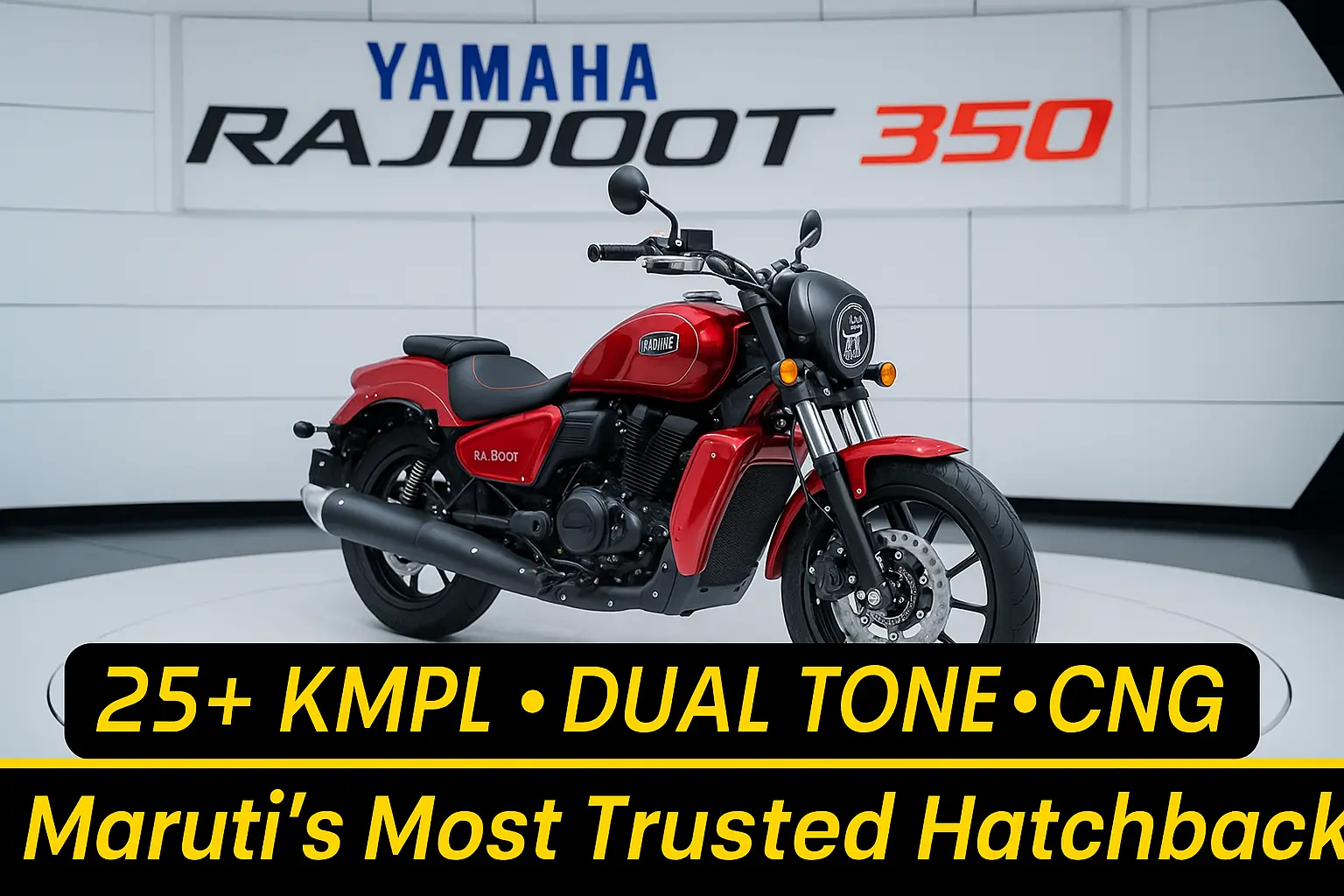The Yamaha Rajdoot 350, better known in India as the Rajdoot Yamaha RD 350, is more than just a motorcycle—it’s a legacy, a symbol of speed, and an unforgettable chapter in India’s biking history. First introduced in the 1980s, this 350cc beast redefined what a performance bike could be in the Indian market. Despite being discontinued in 1990, the Yamaha Rajdoot 350 still dominates enthusiast conversations and biker communities thanks to its raw power, iconic twin-cylinder engine, and the distinct two-stroke exhaust note that earned it cult status.
This article takes a deep dive into the specification, history, cultural impact, and mechanical brilliance of the Yamaha Rajdoot 350, tracing its journey from the streets of Japan to becoming a dream bike for Indian riders. Whether you’re here for nostalgia or researching for your next restore project, you’re in for a thrilling ride.
What Made the Yamaha Rajdoot 350 a Game-Changer in India?

When the Rajdoot Yamaha RD 350 was launched in India by the Escorts Group in 1983, it brought with it a revolution. Imported under the Rajdoot Yamaha partnership, it became the first mass-produced high-performance motorcycle in the country. Unlike the slower motorcycles of the time like the Yezdi or early Royal Enfield models, the Yamaha Rajdoot 350 came with a parallel twin, two-stroke, air-cooled engine that produced blistering performance.
The Yamaha Rajdoot 350 was actually a slightly detuned version of the original Yamaha RD350B from Japan, optimized for Indian conditions. Despite its changes, it was still far ahead of anything on Indian roads at the time. The initial bikes came with a high purchase price, yet attracted enthusiasts who were drawn to its explosive power band and crisp throttle response.
What are the Engine Specifications of the Yamaha Rajdoot 350?
The Yamaha Rajdoot 350 was powered by a 347cc parallel twin engine, producing different outputs depending on the version:
- High Torque (HT): 30.5bhp @ 6750 rpm
- Low Torque (LT): 27bhp @ 6750 rpm (later detuned for emissions and economy)
It had a 6-speed manual transmission, twin carburetors (usually Mikuni VM26), and torque induction via reed valves for enhanced fuel delivery. Lubrication was handled by Autolube, Yamaha’s separate oil-injection system, which reduced the need for premixing gasoline and oil.
With twin exhausts, points ignition, and a fuel tank capacity of 16 liters, the Yamaha Rajdoot 350 was pure muscle in a compact frame. It offered a true Yamaha 350 cc experience like no other motorcycle of its time.
What Was the Design Philosophy Behind the Yamaha Rajdoot 350?
The Yamaha Rajdoot 350 was built for performance and agility. Its specification leaned toward sharp handling and speed, with a double-cradle chassis, twin leading front drum brake (in early models), and front disc brake in later ones. It had 18-inch wheels, telescopic front forks, and dual rear shock absorbers.
The minimalist design meant everything on the bike served a purpose. From the reed valve motor to the clutch basket built for high-revving use, it was made to thrill riders on every gear shift.
Why Did the Yamaha Rajdoot 350 Earn Cult Bike Status in India?
Despite its relatively short run in the Indian market, the Yamaha Rajdoot 350 developed a massive following. It wasn’t just the performance—it was the attitude. Riders felt like rebels, racing through empty highways, leaning into corners, and dominating street drags.
The Yamaha Rajdoot 350 became synonymous with street racing and biker culture. The explosive acceleration, distinct two-stroke sound, and racing heritage earned it a timeless reputation. Even today, owning a restored Yamaha Rajdoot 350 is considered a badge of honor among vintage bike collectors.
How Does the Yamaha Rajdoot 350 Compare to Royal Enfield and Other Bikes of Its Time?
In the 1980s, Royal Enfield, Yezdi, and Rajdoot motorcycles dominated the streets with their rugged build and simple engines. But none came close to the sheer thrill offered by the Yamaha Rajdoot 350. Compared to a Royal Enfield, which prioritized comfort and torque, the RD was built for speed and agility.
The Yamaha Rajdoot 350 could outpace most bikes with ease, reaching 0–100 km/h in under 7 seconds—something unheard of back then. The brake system, carburetor, valve design, and rpm range were all optimized for high performance, unlike most commuter-focused motorcycles.
What Led to the Yamaha Rajdoot 350’s Decline and Discontinuation?
While the Yamaha Rajdoot 350 offered unmatched performance, it wasn’t built for the masses. Its mileage was low (averaging 20–25 km/l), the high purchase price discouraged budget buyers, and spare parts were hard to come by. The market, at that time, preferred affordable and fuel-efficient options like the RX100 or even Leti for everyday use.
Add to that the lack of proper service support and mechanics familiar with its high-tech engine, and the Yamaha Rajdoot 350 began to fade. Production ended in 1990, marking the end of India’s first true performance bike.
How Did Escorts Group and Yamaha Collaborate on the Yamaha Rajdoot 350?
The Escorts Group, through its tie-up with Yamaha, brought the RD to India. It was rebadged as the Rajdoot Yamaha and sold under the Rajdoot 350 nameplate. Escorts had to localise the bike to fit Indian roads, emissions norms, and economy demands. That led to the creation of HT and LT variants, differing in bhp and tuning.
Though Escorts was known for practical vehicles, the decision to import the Yamaha Rajdoot 350 underlines Yamaha’s intent to introduce classic Japanese motorcycles to Indian streets. It was a bold move, albeit one slightly ahead of its time.
Is the Yamaha Rajdoot 350 Still Relevant for Modern Enthusiasts?
Absolutely. The Yamaha Rajdoot 350 may have vanished from showrooms, but not from memories. Many enthusiast clubs around India still organize rides, events, and restorations of Yamaha bikes like the RD. Spare part sourcing has improved, with even aftermarket options like Wiseco forged pistons and custom barrel kits available.
The bike remains a favorite for collectors who admire vintage engineering. Even modern Enfield owners often dream of adding a Yamaha Rajdoot 350 to their garage.
How to Restore and Maintain a Yamaha Rajdoot 350 Today?
Restoring a Yamaha Rajdoot 350 involves sourcing original parts like carbs, cdi units, fuel tank, twin exhausts, and proper tuning for the torque curve. Mechanics need to understand reed valves, torque induction, and points ignition to fully bring the bike to life.
Today’s restorers also add modern touches such as better brake systems or digital CDI, while maintaining the authentic aesthetic. Websites and online forums now make it easier to find Yamaha Rajdoot 350 parts globally.
Why Is the Yamaha Rajdoot 350 More Than Just a Bike?
The Yamaha Rajdoot 350 is not just another motorcycle; it’s an emotion. Riders bond over shared stories, drag races, near-misses, and glorious rides. Owning one today is a statement of passion and engineering admiration.
Few bikes in India have achieved such legendary status. Whether it’s the classic Japanese motorcycle pedigree or the raw performance of the Yamaha 350 cc, the Yamaha Rajdoot 350 is a symbol of what biking should feel like—free, powerful, and unforgettable.350 is a symbol of what biking should feel like—free, powerful, and unforgettable.
Conclusion
The Yamaha Rajdoot 350 is the kind of bike that only comes once in a generation. Though production ended over three decades ago, its spirit rides on in every collector’s garage, every forum post, and every biker’s dream.
From being the first 350cc twin-cylinder bike in India to a benchmark for performance, the Yamaha Rajdoot 350 isn’t just remembered—it’s revered. It wasn’t the most practical or affordable, but it was the most exciting. And for that, it earned its legendary status.
Whether you’re lucky enough to ride one today or just admire it from afar, one thing is certain: the Yamaha Rajdoot 350 will always be India’s first and most iconic cult bike.
FAQ
What is the top speed of the Yamaha Rajdoot 350
The Yamaha Rajdoot 350 could reach a top speed of around 140–150 km/h, depending on the variant and tuning.
What is the mileage of Yamaha Rajdoot 350?
It offers a mileage of approximately 20–25 km/l, which is low by modern standards but expected for a performance two-stroke.
Was the Yamaha Rajdoot 350 made in India?
Yes, it was manufactured in India by the Escorts Group under the name Rajdoot Yamaha RD 350.
Why is Yamaha Rajdoot 350 called a cult bike?
Due to its performance, unique sound, racing legacy, and rarity, it gained a loyal following and is now a collector’s gem.
Can I buy a Yamaha Rajdoot 350 today?
It’s no longer in production, but restored or original Yamaha Rajdoot 350s are available in second-hand markets and classic auctions.






